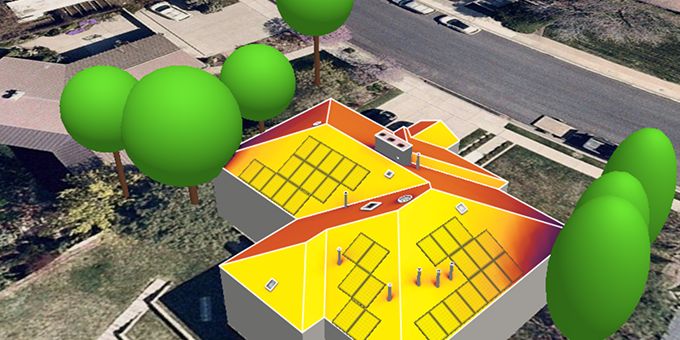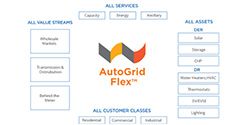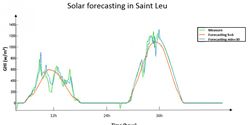Rapid Assessment of Wind Damage
The asset owner needed to quickly assess the damage to prepare for possible insurance claims and develop a remediation strategy. Raptor Maps' analysis found more than 20MWdc of site capacity was impacted by equipment anomalies.
Customer-Centric Energy Products to build the Solutions needed to Fight Climate Change
Despite rapid growth, the market is still so nascent that the prospective customer population is still largely unaware of the opportunity community solar provides.
Scale Your Solar Organization Seamlessly With APIs
As an organization scales, bespoke cross-team communications become a major choke point. In addition to being slow, error-prone, and redundant, these manual touchpoints also result in unnecessary spending and lost sales.
Green Software - A New Trend for a Better Planet
How to call the wider group of companies which bring to market innovations that could replace existing technologies with more environmental-friendly ones, even if their primary goal doesn't strictly align with the definition of Green Tech?
Calculating Battery Backup & Storage in Residential Solar
Using software for PV system design will reduce time spent and costs for each project. What sets Aurora apart from other software tools are our accuracy, pioneering technology, experience, and our awesome customer success team.
How Machine Learning Could Impact the Future of Renewable Energy
Machine learning technology - computer programs that use data sets to "learn" how to see patterns in information like wind speed and energy output - may be the answer to wind farms' prediction problem.
Software Is Changing The Solar Power Industry: Here's 5 Reasons Why
With advanced technology, companies have embarked on an energy software development process that has enabled companies and individuals to control how energy is produced, circulated, and used.
New Solar Permit Software to Reduce Costs and Expand Residential Markets
"The SolarAPP platform will help local governments reduce administrative burdens and make it faster and easier for customers to go solar," said Andrea Luecke, President and Executive Director at The Solar Foundation.
Solar + Storage Solutions
Were increasingly seeing solar developers including energy storage as a standard offer in their customer proposals, rather than talking about energy storage as a future option, as we saw for the past two years.
How AM Software Can Help You Consolidate Your Monitoring System Data
There are a lot of questions about the difference between a monitoring system and renewable asset management (AM) software. Specifically, if AM software provides similar functionalities as a monitoring system and when to start using asset management software.
What is Flexibility Management Software?
At the heart of what we do is the notion that the flexible capacity from grid-connected distributed energy resources (DER) that can be ramped up or down needs to be optimized to support an efficient, decarbonized grid.
Solar Energy Becoming More Predictable Thanks to Forecasting
Ultimately, the use of forecasting allowed the plant operator to send commitments in line with what is required by the grid operator.
Energy Storage: It's About the Software
Carl Weinschenk� for EnergyManagerToday: � Renewable initiatives rely on the ability to save the generated energy for a rainy - or windless - day. It follows that the software driving the pivotal task of managing the energy storage system is of paramount importance, says Gabe Schwartz, the Director of Marketing for Stem, which describes itself as an intelligent storage company that combines hardware and software storage platforms.
The core storage technology itself is important, of course. But the linchpin - the secret sauce - is the way in which that energy is handled once it is generated. "It is not a solar panel…where if the sun is shining you are in good shape," Schwartz said. "It must shift use from one time to another knowing exactly when most valuable time to do that is and have the ability to act quickly when those opportunities present themselves both to the customer and the grid."
The market for storage - and the software that drives it - is growing. � Cont'd...
Manage Costs and Risks With Long-Range Probabilistic Weather Forecasts
Deterministic weather forecasts have their place, but probabilistic forecasts are the clear choice for alternative energy companies that take the weather seriously and need long-term data.
MIT Tool Gives the Cost of Installing Solar Panels on Any Roof in Your City
Daniel Oberhaus for Motherboard: The world, it seems, is falling in love with solar energy. Recent years have seen the increasing adoption of solar power around the world as an alternative energy source for everything from individual homes to the entire energy grid, with the United States’solar capacity having grown to 24 GW, a more than a 17-fold increase since 2008. Part of this rapid growth for solar infrastructure is the result of markedly more efficient solar energy cells, but in spite of these recent technological advances, transitioning to solar power still doesn’t make sense (at least economically speaking) everywhere.
Installing photovoltaic systems can be pretty pricey, and home- and business-owners have to engage in a complex cost-benefit analysis to see if transitioning to solar power is an economically sound idea. The “pain-in-the-ass” factor of such calculations alone might be enough to turn people off of the idea of contemplating installing a photovoltaic system, so the folks at MIT came up with a solution: Mapdwell.
Mapdwell maps the solar potential of entire cities by doing a cost-benefit analysis for every rooftop to determine if installing solar panels on that rooftop is worth the investment. All you do is enter your address into the program, and it will tell you the expected installation costs, the number of years it will take to earn back this investment from your photovoltaic system, the amount of carbon offset by the installation, as well as incredibly detailed installment specs such as the optimal panel tilt and the number of panels that could fit on the roof. Cont'd...
Records 1 to 15 of 50
Featured Product

Nature's Generator MyGrid 10K
A 10,000W plug & play whole-home generator with a 10kWh LiFePO4 battery for reliable backup power. Features easy setup, flexible 120V/208-240V input, and solar/wind charging. Expandable with extra batteries or solar panels, and can pair two units for 20,000W for even larger energy needs. Powers your home during power outages, reduces electricity costs, and supports sustainable energy.














